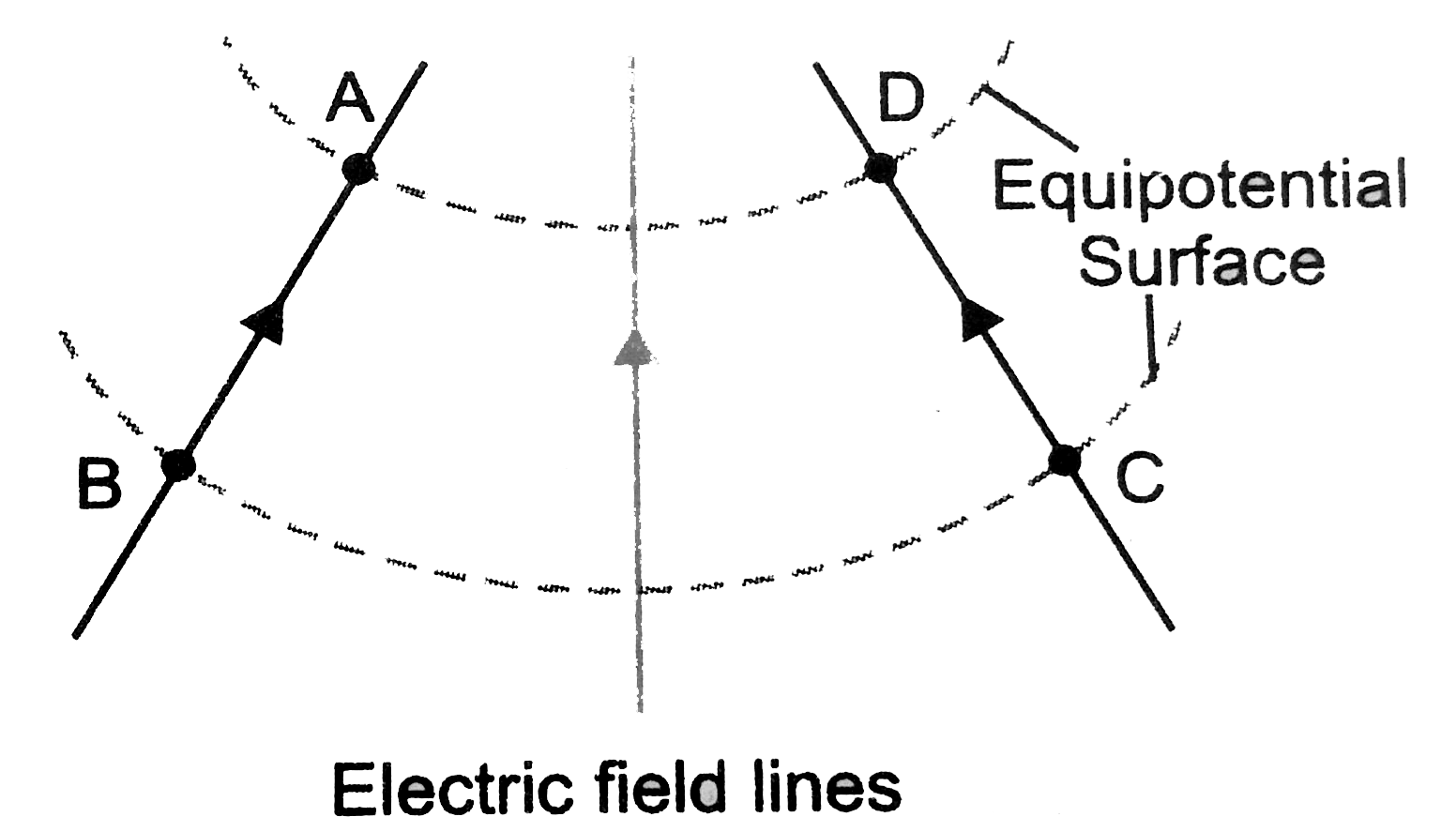15 joule of work has to be done against an existing electric field to take a charge of 0.01 C from A to B. Then the potential difference (VB−VA) is :-
1500 volt
−1500 volt
0.15 volt
none of these
The correct Answer is:A
To find the potential difference VB−VA when 15 joules of work is done against an electric field to move a charge of 0.01 C from point A to point B, we can use the formula relating work done, charge, and potential difference.
1. Understand the relationship between work, charge, and potential difference:
The work done W in moving a charge Q through a potential difference VB−VA is given by the equation:
W=Q⋅(VB−VA)
2. Substitute the known values:
We know that:
- Work done W=15 joules
- Charge Q=0.01 C
Substituting these values into the equation:
15=0.01⋅(VB−VA)
3. Rearranging the equation to find the potential difference:
To isolate VB−VA, we can divide both sides of the equation by 0.01:
VB−VA=150.01
4. Calculate the potential difference:
Performing the division:
VB−VA=1500 volts
5. Conclusion:
The potential difference VB−VA is 1500 volts.
Final Answer:
VB−VA=1500 volts
The work done W in moving a charge Q through a potential difference VB−VA is given by the equation:
W=Q⋅(VB−VA)
We know that:
- Work done W=15 joules
- Charge Q=0.01 C
Substituting these values into the equation:
15=0.01⋅(VB−VA)
To isolate VB−VA, we can divide both sides of the equation by 0.01:
VB−VA=150.01
Performing the division:
VB−VA=1500 volts
The potential difference VB−VA is 1500 volts.
VB−VA=1500 volts
Topper's Solved these Questions
- ELECTROSTATICSBook:MOTIONChapter:ELECTROSTATICSExercise:Exercise -3 Section (A)
Explore 41 Videos
- ELECTROSTATICSBook:MOTIONChapter:ELECTROSTATICSExercise:Exercise -3 Section (B) Previous Year Problems | JEE Main
Explore 30 Videos
- ELECTROSTATICSBook:MOTIONChapter:ELECTROSTATICSExercise:Exercise -1 (Objective Problems | NEET)
Explore 105 Videos
- ELECTRONICS - SEMI CONDUCTORBook:MOTIONChapter:ELECTRONICS - SEMI CONDUCTORExercise:EXERCISE - 3
Explore 29 Videos
- ELECTROSTATICS - I Book:MOTIONChapter:ELECTROSTATICS - I Exercise:EXERCISE - 4 (Level -II) PREVIOUS YEAR - JEE ADVANCED
Explore 13 Videos
Similar Questions
20 J of work has to be done against an existing electric field to take a charge of 0.05 C from A to B. How much is the potential difference VB−VA ?
View Solution12 j of work has to be done against an existion electric field to take a charge of 0.01 C from A to B. How much is th potential difference VBVA?
View Solution
Knowledge Check
Find Vba, if 12J of work has to be done against an electric field to take a charge of 10−2 C from a to b.
A120VB−250VC1200VD−120VThe work done in carrying a charge of 5μC form a point A to a point B in an electric field is 10mJ. The potential difference (VB−VA) is then
A+2kVB−2kVC+200VD−200VThe work done in carrying an electron from point A to a point B in an electric is 10 MJ. The potential difference (VB−VA) is then
A+2kVB−2kVC+200VDNone of these
When an electron moves from A to B along and electric field line as shown in Fig. the electric field does 3.94×10−19J of work on it. What are the electric potential differences
(VB−VA),(VC−VA),(VC−VB) ?

View SolutionCalculate the work done in taking a charge of 0.02 C from A to B if the potential at A is 20 V, and that at B is 30V.
View SolutionIn figure two points A and B are located in a region of electric field . The potential difference VB−VA is

View SolutionIf 50 joule of work must be done to move an electric charge of 2 C from a point, where potential is -10V to another point where potential is V volt, the value of V is
View SolutionFind the work done (in J) when a charge of 20 C moves across a potential difference of 4 V.
View Solution